By Alex Trukan
Forward passes breaking the lines can be very dangerous and hard to defend against. Many modern teams try to break out from the back line by passing accurately on the ground, usually directly into the striker or winger. When trying to defend this type of attacking strategy, compactness, organisation, screening and marking are the key. Screening can be especially useful as it offers opportunities to guide the attacking team into certain areas, as well as intercept the ball and start the counter attack. Effective screening involves much more detail than just getting between the ball and the player. Body position, types of movement and distances will influence where, when and how the opposition will play and hopefully increase the chances of winning the ball back.
Opposition centre backs in possession pose a threat of making a penetrative forward pass as they are usually under no or little pressure. One of the ways to prevent this is to form a compact block with three forward players (i.e. two strikers and one attacking midfielder stepping up) and two central midfielders behind them. This will ensure three-line screen in key areas before the ball can get to the opposition striker. In this strategy, central forward player would usually mark the defensive midfielder, whereas two other forward players would be able to get in a line with the ball as opposition centre backs have it. Two midfielders in behind would be also able to provide cover and additional ‘wall’ in front of the ball.
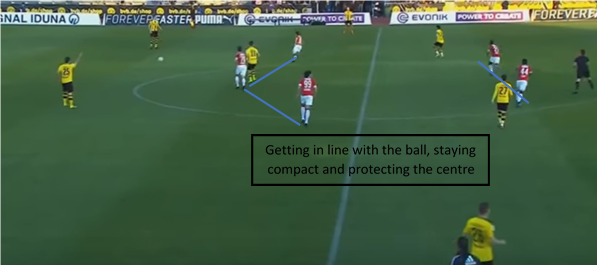
The key priority would be to prevent the balls going through the centre. This is why, both front three and midfielder two should stay narrow and very compact. When the ball is played sideways into wide areas, having five at the back allows the team to deal with it and apply pressure on the ball quickly.
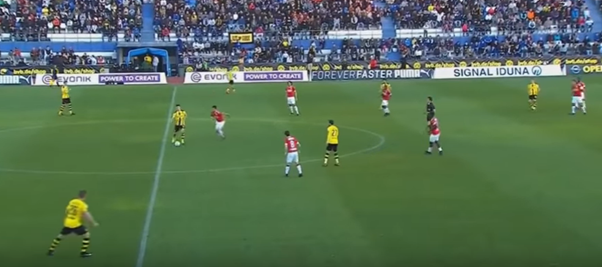
The front three player on the ball side would be also able to slide across and screen forward pass into the striker, forcing full back down the line. This will also give extra time for two central midfielders to get deeper behind the ball and prevent any immediate passes into centre as this is biggest danger.
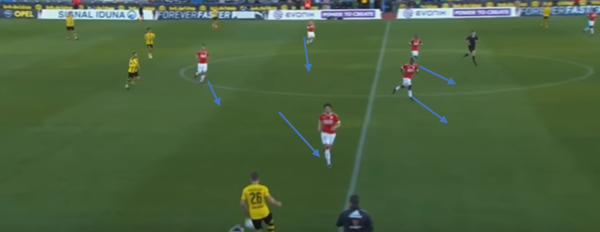
If the opposition team decides to switch the play back through the middle, gaps may arise on the blind side in half spaces. This might be especially the case when playing with two central midfielders as they will have to cover a lot of space. This shows the importance of working together with strikers’ unit and making sure strikers screen the pass forwards initially.
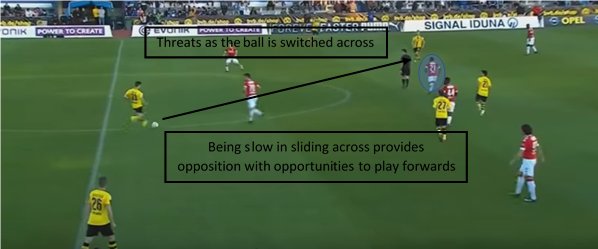
Effective screening position should put a player into a position to apply pressure on the ball and try to intercept forward passes. This can initiate dangerous counter attacks as there will be usually 3 players in front of the ball to pass into and make forward runs.
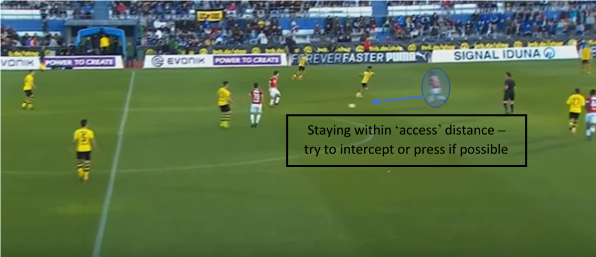
The type of screening used should always reflect strengths and weaknesses of the whole team. Using compactness in central midfield will force out wide where an overload can be applied. Once the ball is in the area where the team is set to win it back, it is important to not only screen forward passes but also cut out options to play backwards. Screening back passes is crucial part of effective defending traps.
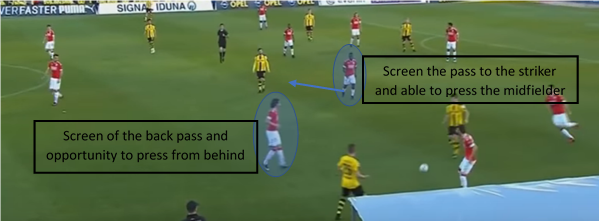
In order to screen effectively, players should be encouraged to constantly scan for players in behind them. This should be done quickly as the situation in front of the defender might change. Adapting sideways body position will help with this as it will allow wider vision angle without turning head around.
By Alex Trukan, Development Coach, Nottingham Forest
@AlexTrukan


